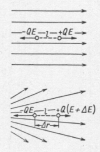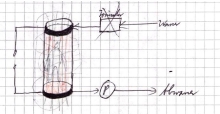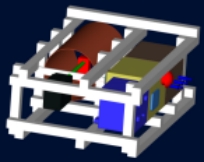
Our idea is very simple. Instead of the gravitation force which has no effect in space, we generate an alternative force which is able to accelerate water drops in weightlessness.
Every pupil has to learn in school that a dipole like water is influenced by an inhomogeneous electric field. Inhomogeneous means that the field density varies in dependence on the distance to the pole or electrode (you may see this in the right drawing on the non-parallel field lines in contrast to an homogeneous field shown above).
A dipole is a molecule that has two poles – a positive pole and a negative pole – but its outward appearance is neutral as both charges are of the same value. In a homogeneous field the force to both poles is the same because the field density is equal in every point. In an inhomogeneous field the field density differs at the two poles. The force that causes an acceleration directly depends on this field density. Consequently, the dipole is accelerated by a resulting force and moves towards the pole where the field lines start.

First Sketch of a shower by Michael
With our experiment we want to observe the kinematical reactions of a water drop in an electric field. Especially, we want to determine the acceleration of the drops in dependence on the intensity of the applied field. With that data we will try to calculate and evaluate the minimum field intensity and energy consumption as well as the physiological aspects of the dimension of a shower cubicle. We want to find out if a shower for use in micro-gravity (e.g. on the ISS) could be designed, in which water streams in one direction like on earth.

We record the movement with a camcorder so that we will be able to calculate the acceleration after the flight. With the help of a computer-generated scale projected onto the pictures, a time reference set by the camcorder (24 frames per second), and the values of the parameters (of e.g. field intensity and positions of the injections) we will calculate the intensity of the water drops’ acceleration.
This text is an excerpt of our original experiment description, with which we applied for the campaign at ESA. In the Downloads section you will find some PDFs describing our results.